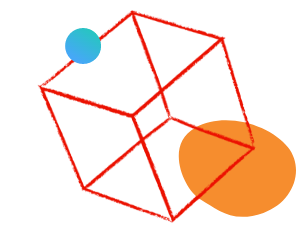This conversation has been locked due to inactivity. Please create a new post.



This conversation has been locked due to inactivity. Please create a new post.
From the definition:
The depth to which customers to your site browse. For example, if a customer views three pages on your site before making a purchase, that visit depth would be three.
So I suppose, if I create metric:
Segment: Pageview = 2,
Metric:
Then the count of visit should equals to Visit: Visit Depth=2
But the following screen capture gives different voice.
Does it mean, if user consecutively visits same page 2 times, it'll be taken as 2 pageviews, but 1 page?
Please help to clarify or correct my understanding.
Thanks.
H
Solved! Go to Solution.

one more explanation for a possible difference of the two segments
„visit depth = 2“ is looking for visits with 2 pageviews where the pagenames are not the same! this is because the visit depth does not increase when the pagename of the second pageview is the same, see here: Hit Depth (at the end of the article)
this means that the difference of those two segments you mentioned should be all visits with 2 pageviews having the same pagename.
i hope that helps

Page view = 2 means that the visitor in question fired 2 page views. These could happen on separate visits. So for example, If I visited your site then bounced, then the next day visited your site again and bounced, that would match the segment of 'page view = 2'.
Gigazelle,
Thanks for your reply.
But I see in segment, it's set at "Visit" Level, but it seems to me the example in your reply is at "Visitor" Level. Is it?
Please help to clarify
In fact, I would like to count: How many Visits with "2 pageviews" in each visit.
So if like you mentioned, "in separate visit", then each visit will be excluded since each of them include only 1 page view.
Thanks,
H
Views
Replies
Total Likes

one more explanation for a possible difference of the two segments
„visit depth = 2“ is looking for visits with 2 pageviews where the pagenames are not the same! this is because the visit depth does not increase when the pagename of the second pageview is the same, see here: Hit Depth (at the end of the article)
this means that the difference of those two segments you mentioned should be all visits with 2 pageviews having the same pagename.
i hope that helps

The segment definitions 'page view' and 'visit' are calculated a little bit differently than most other segment definitions.
These two definitions take a) the date range; and b) overall visitor into consideration. The segment definition 'page view' basically says "take every page view within the date range and organize them by unique visitor". With your segment:
Include all visits where page views = 2
That's basically saying 'whenever a visitor hit their second page view within the date range, include that visit'. Urs's recommendation to use visit depth or hit depth would be my recommendation as well.
Thanks for your further clarification,
I thought following defines "if in a visit, there are 2 pageviews", now I understand it means "whenever a visitor hit their second page view"
Views
Replies
Total Likes

to be honest, i would have assumed that „visit“-container with „PV=2“ would only look at single visits not the overall visitor!
to see if there is a difference you could create a new segment with the following definition:
„visit-container“ with formula
{ (hit container with pageview exists) then within 1 visit (hit container with pageview exists) }
if you get the same numbers as with your visit-segment, then it would not look at the whole visitor...
Views
Replies
Total Likes
I agree with you, and it seems to me the "„visit depth = 2“ is looking for visits with 2 pageviews where the pagenames are not the same!" is more reasonable.
Views
Replies
Total Likes